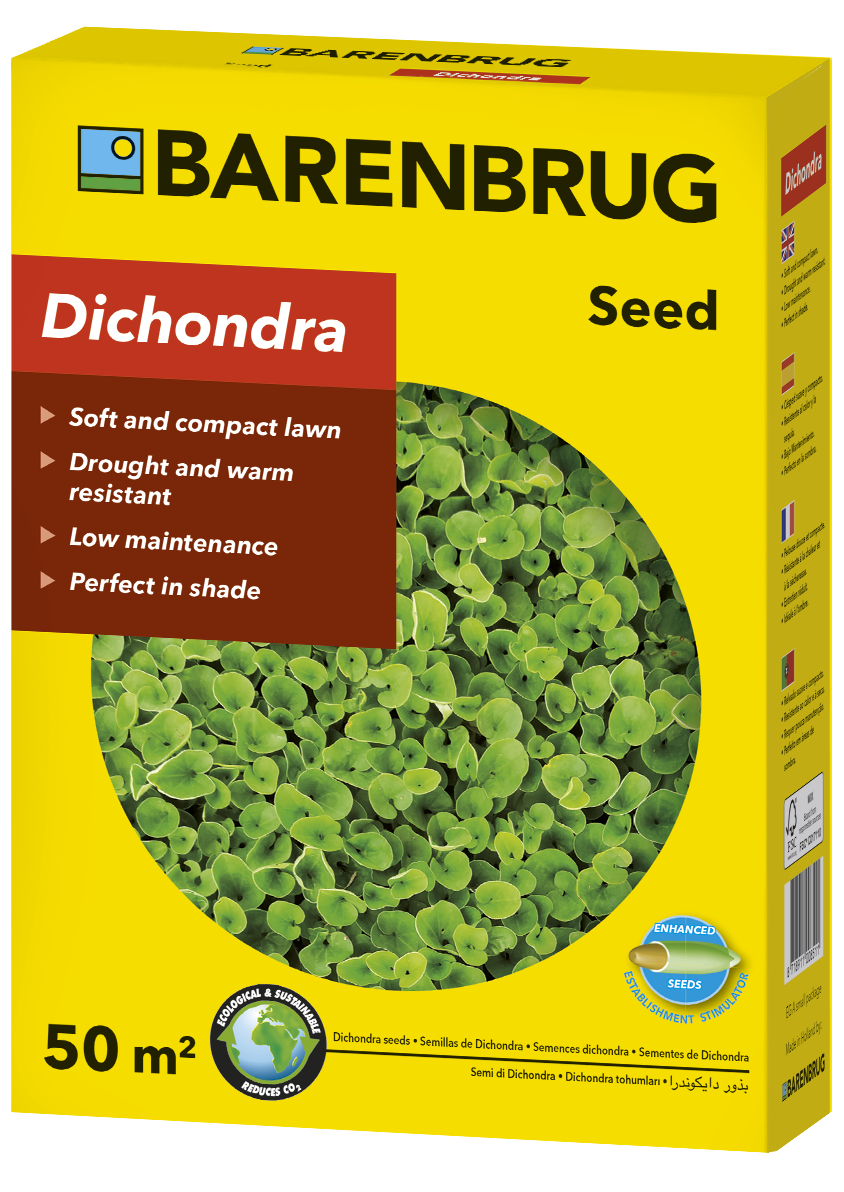Groundcover green carpet-Dichondra repens Barenbrug 500 g
| HUF 8,481 * (nettó: HUF 6,678) | |
What plant is dichondra repens, or creeping bentgrass?
Dichondra repens - a perennial, small-leaved, bright green, fast-growing ground cover plant. In gardens it can be used as a substitute for lawns, spreading by side shoots to cover the ground densely.
Where is this type of mulch recommended?
In sunnier, drier places it will grow shorter and its leaves will be smaller, in shady, damp places its leaves will be larger and it will grow slightly taller.
It is particularly suitable for ground cover between trees and garden plants, for filling in the spaces between garden paths or where grass is difficult to maintain.
Characteristics of the plant
It tolerates a wide range of soil types and both sunny and shady areas.
It tolerates moderate trampling and wear and tear, retaining its distinctive green colour all year round.
Sowing Dichondra:
Loosen the soil to a depth of about 15 cm and prepare a fine, even, well-milled seedbed for sowing. Pay attention to the drainage of the area to be planted, as this will contribute significantly to the development of a healthy, dense vegetation. It is advisable to use the recommended fertiliser for the lawn before sowing.
Time of Sowing:
The best time to plant Dichondra is when daytime temperatures are above 20°C and night-time temperatures do not drop below 10°C. This can be either spring or autumn.
Sowing method:
The recommended seed rate for sowing is 10 g/m2 and the sowing depth should be about 0,5 cm. After planting, ensure frequent, low-rate watering for effective germination.
Germination time:
Germination time is 7-14 days, depending on conditions.
Watering Dichondra
After sowing, frequent watering is necessary to achieve rapid germination and initial development. However, when the plants are sufficiently established and mature, it is advisable to water less frequently but with a higher volume of water. This will help to promote the development of a deep root system. It should also be borne in mind that Dichondra is more likely to suffer from over-watering than from less frequent watering.
Pruning Dichondra:
The first mowing should be done when the vegetation reaches a height of 5 cm. The recommended mowing height is 3 to 5 cm, but care should be taken to reduce the mowing height slowly, gradually and in small increments. It is recommended to mow every two weeks, but you can leave it unmowed if you prefer.
Nutrient supply to the plant:
Apply 4 to 6 g/m2 N after germination and initial development after sowing in the spring, repeated every 4 to 6 weeks later in the summer. Ensure that the foliage is dry when fertiliser is applied and wash the granules from the foliage to the soil after application.
| Weight: | 0.5 kg |
|---|---|
| Width: | 180 mm |
| Height: | 140 mm |
| Length: | 40 mm |
| Aviability: | 1-4 nap |
| Basic sales unit: | db |
Login
Login
